Yes, I have again been taking advantage of the wonderful fact that the Museum of London has reopened and is free to enter with a timed ticket.
I was thrilled to see a new exhibit connected to my hero Samuel Pepys – naval administrator, Member of Parliament and, of course, famous diarist. The item is a silver dinner plate made in 1681/82 and engraved with his coat of arms. Scratched by knives and forks, it is one of only three that now survive of the full dinner service …
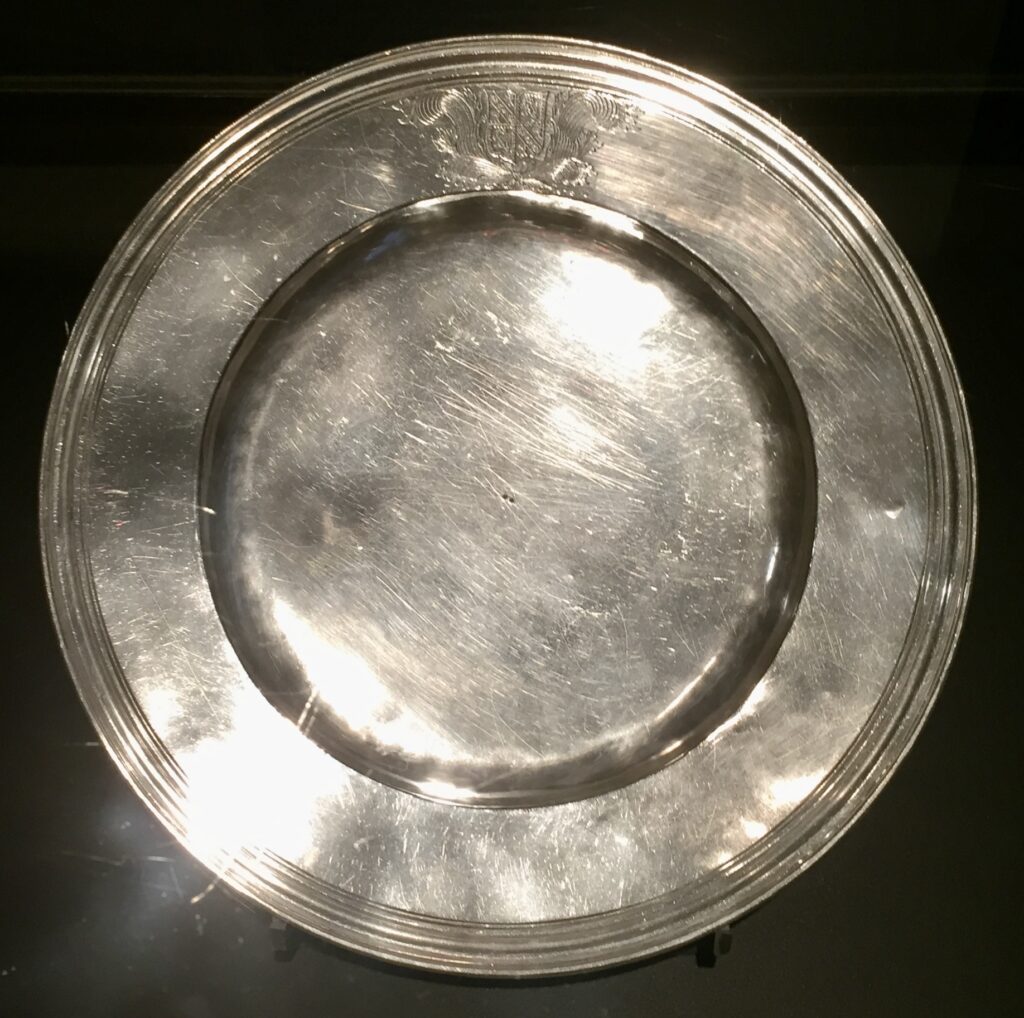
By the time he commissioned this he was already a wealthy man and took great pleasure in entertaining at home. I like this boast from his diary dated 8th April 1667 and his remark about Mrs Clarke made me laugh out loud …
We had with my wife and I twelve at table and very good and pleasant company, and a most neat and excellent, but dear dinner; but, Lord, to see with what envy they looked upon all my fine plate was pleasant, for I made the best show I could, to let them understand me and my condition, to take down the pride of Mrs Clarke, who thinks herself very great.
Being a man of intense curiosity, and a Fellow of the Royal Society, Pepys would almost certainly have heard of this discovery made during the rebuilding of St Martin’s Church on Ludgate Hill in 1669 …
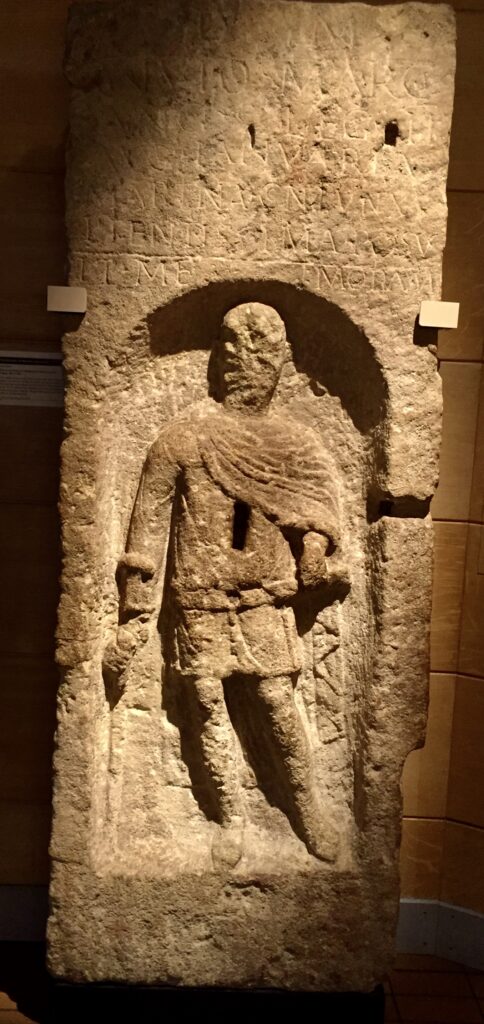
It’s the third century tombstone of a Roman centurion wearing a tunic, a military belt and a long cloak draped over his left shoulder.
Amazingly, the inscription is still legible …
To the spirits of the departed and to Vivius Marcianus of the 2nd Legion Augusta, Januaria Martina his most devoted wife set up this memorial.
I think modern illustrations like this are mainly for the benefit of children, but I love them …
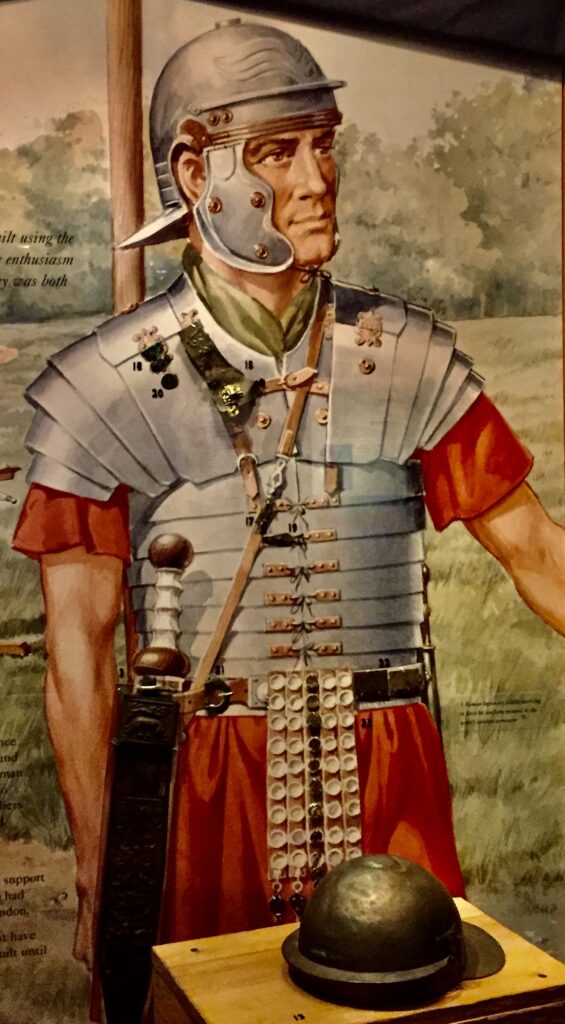
Incidentally, and still on a Roman theme, nearby is a fine mosaic floor dating from AD 300 and discovered in Bucklersbury in 1869 …
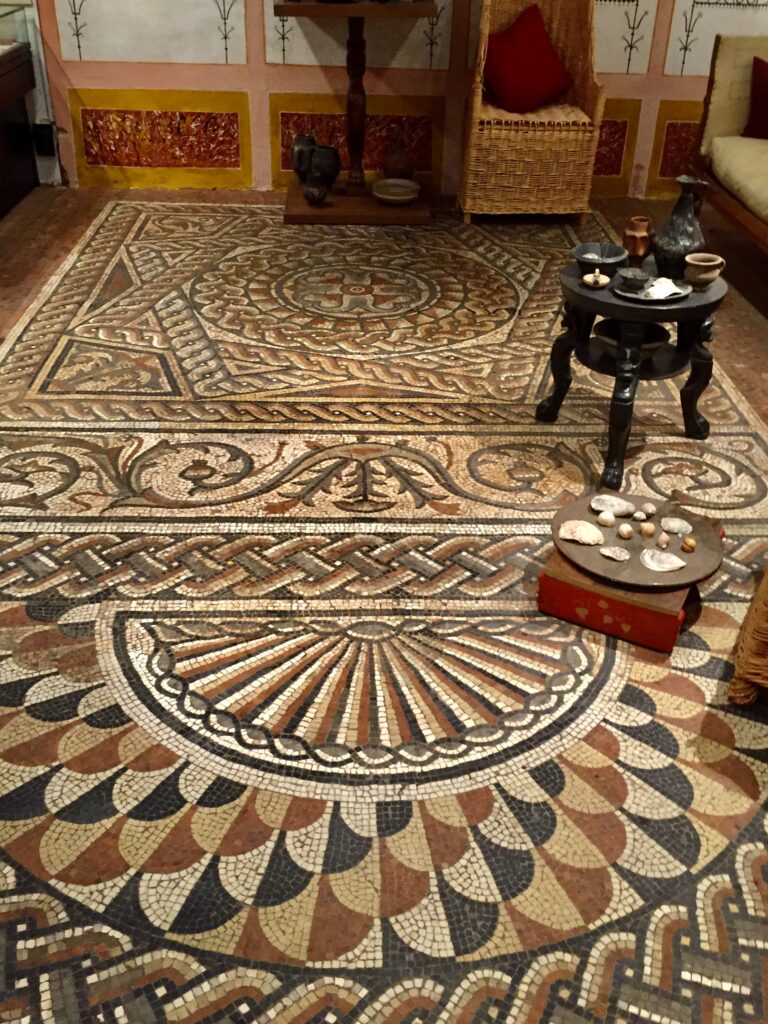
Pepys witnessed and wrote about the Great Fire of London in 1666 and the Museum has a rare depiction of the City before the fire. It dates from around 1630, three years before he was born …
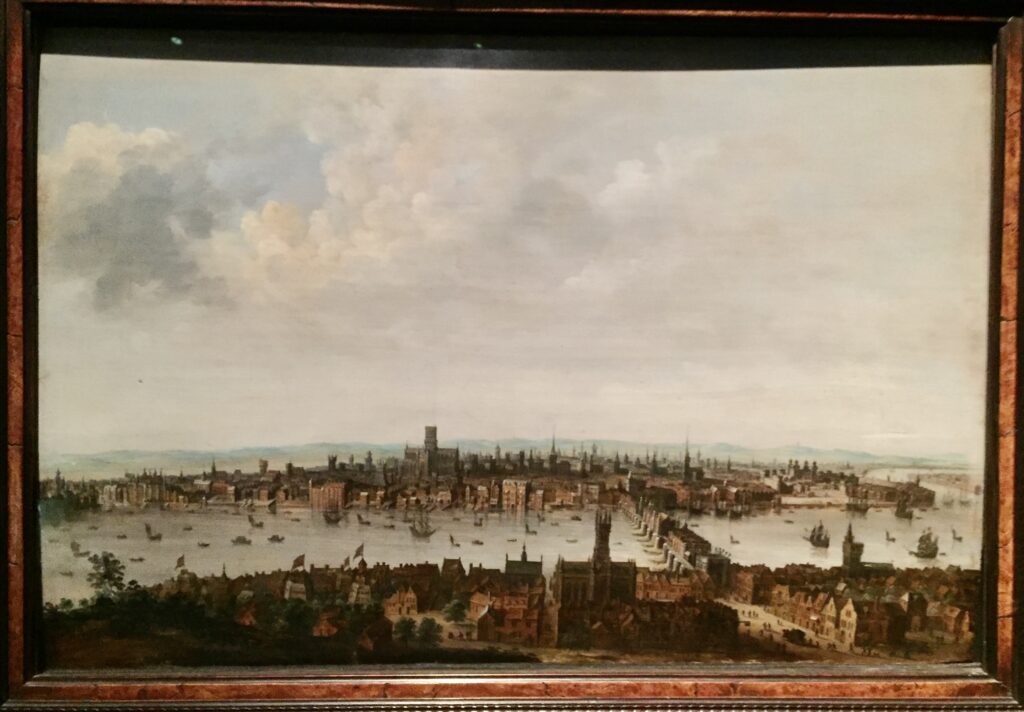
Nearby is a dramatic oil painting of the conflagration at its height …
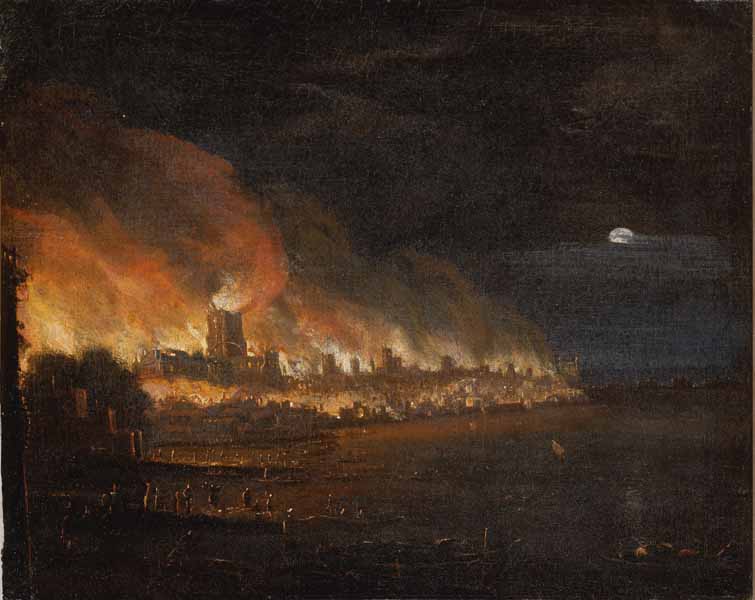
The view is taken from the west with the Cathedral, fiercely ablaze, dominating the scene. John Evelyn described what happened when the fire reached St Paul’s …
The stones of St Paul’s flew like grenades, the lead melting down the streets in a stream, and the very pavements of them glowing with fiery redness.
The cathedral was thought to be safe and the nearby printers and booksellers stored their entire stock in the crypt. Unfortunately the fire caught hold of wooden scaffolding put up for repairs and the cathedral and all its contents were consumed.
Since his home was at risk, Pepys hired a cart ‘to carry away all my money, and plate, and best things’ and buried his valuable Parmesan cheese in the garden.
Such was the intensity of the blaze that these two iron padlocks and key melted together in a lump. The owner of the premises, an 80-year-old watchmaker, chose to hide in his cellar rather than flee (presumably to protect his stock from looters). These items were found beside his body …
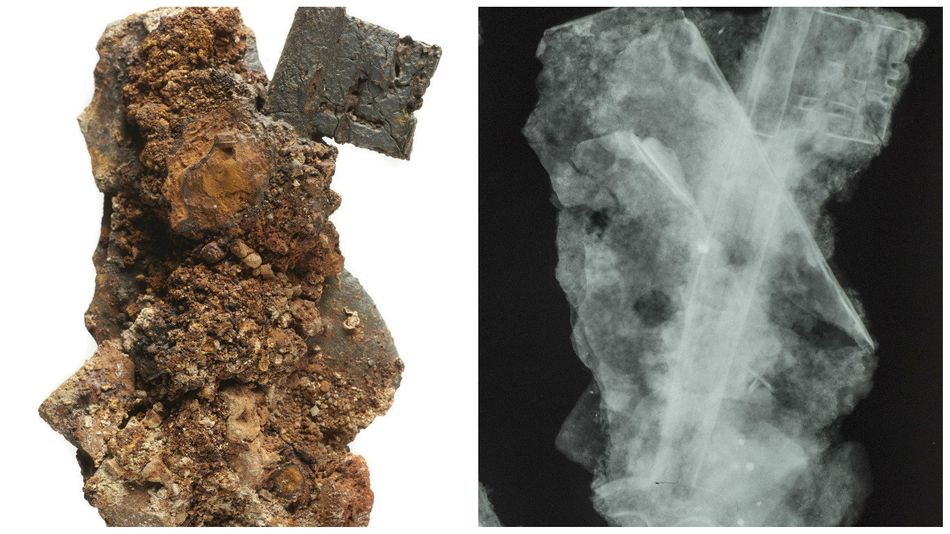
Referring to a giant who was supposed to have lived in the building, this figure, known as Gerald the Giant, stood in a niche on the front elevation of Gerard’s Hall in Basing Lane and dates from around 1670 …
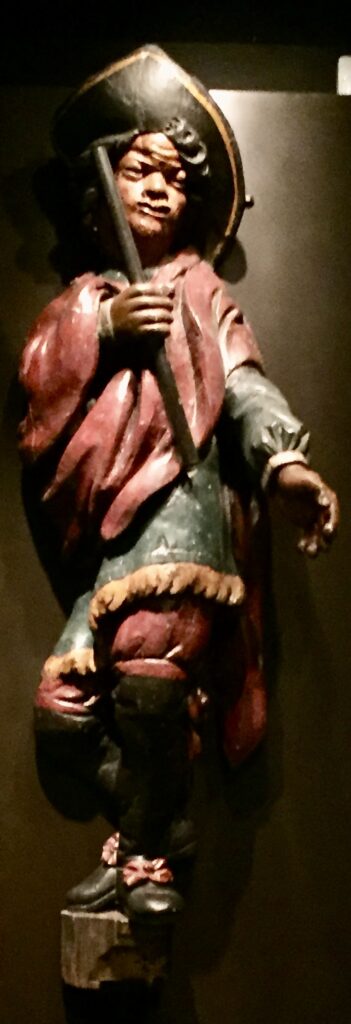
I like his daintily decorated shoes …
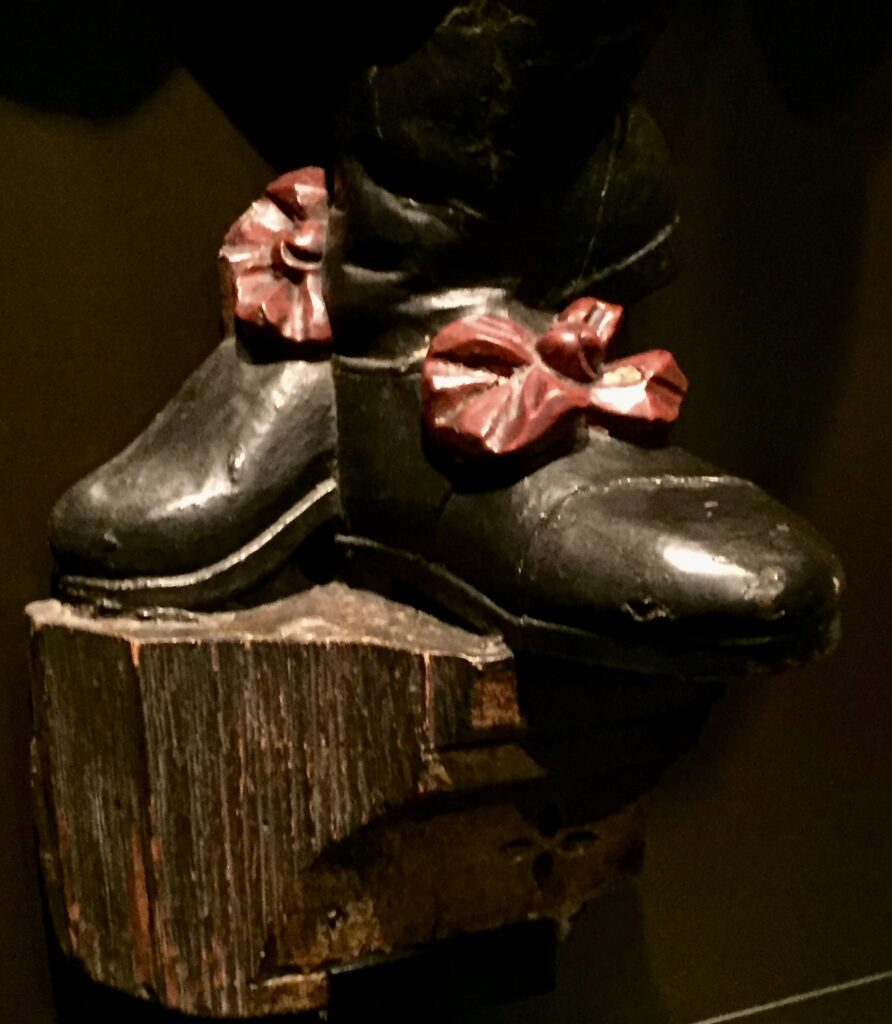
There is also some lovely stained glass dating from 1660 – 1700 …
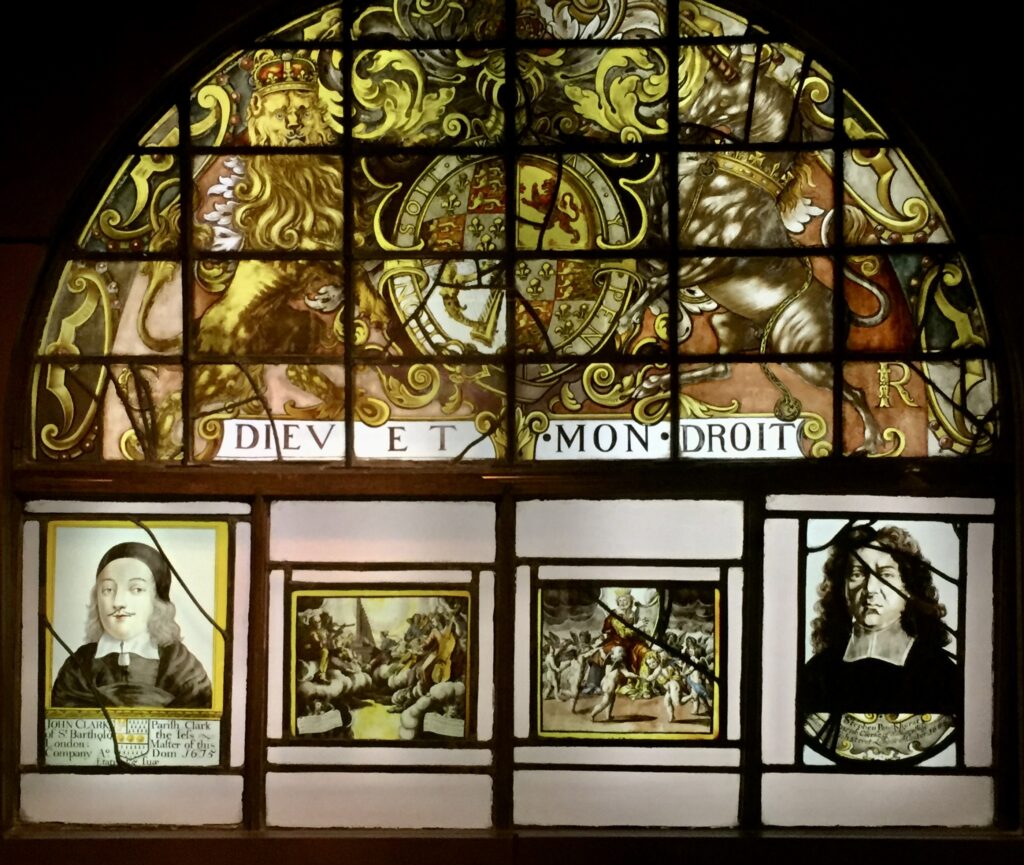
Dragging myself away from the 17th century, there were two paintings I really enjoyed studying. The first is entitled Eastward Ho! and was painted by Henry Nelson O’Neil in 1857. It became his most popular work …
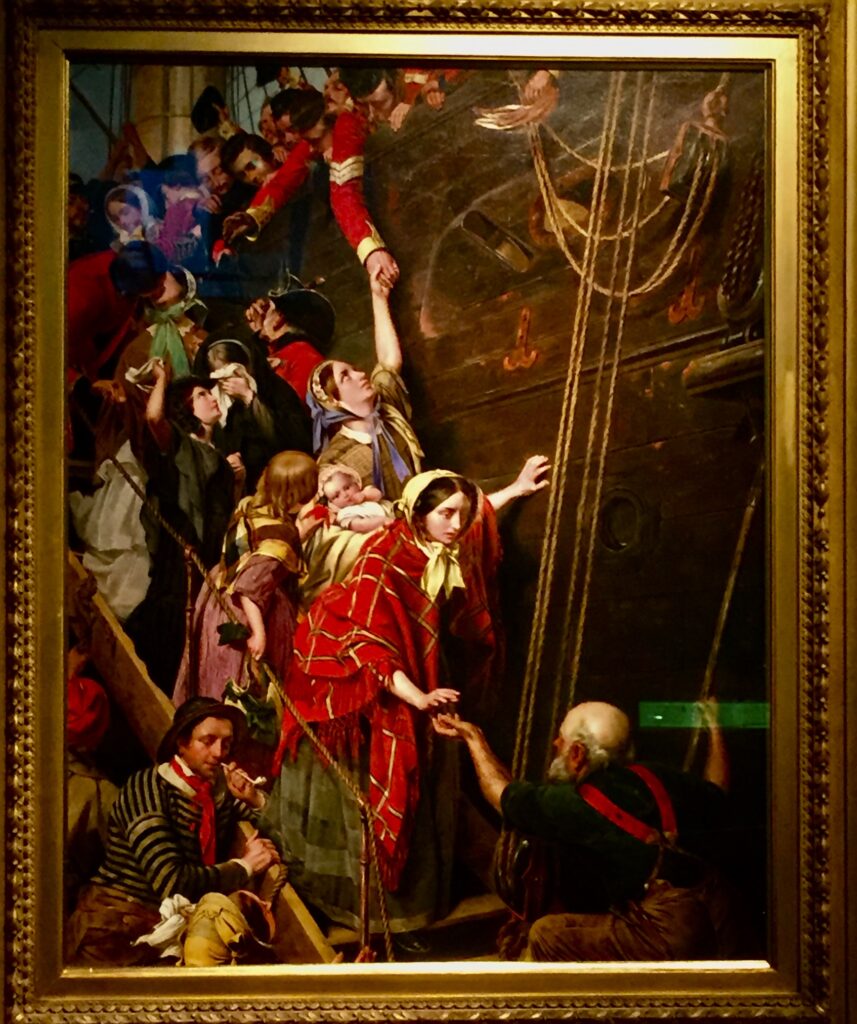
Soldiers are shown boarding a ship at Gravesend, leaving to fight in the ‘Indian Mutiny’ – the first Indian war of independence. In a poignant scene they are saying farewell to their loved ones and it is a very emotionally charged picture. For the men we can only see in their faces optimism and patriotism whilst in the faces of the women we see fear and a sense of foreboding.
The Times newspaper commented …
Hope and aspiration are busy among these departing soldiers, and if mothers and wives, and sisters and sweethearts, go down the side sorrowing, it is a sorrow in which there is no despair, and no stain of sin and frailty…
A year later he painted Home Again …
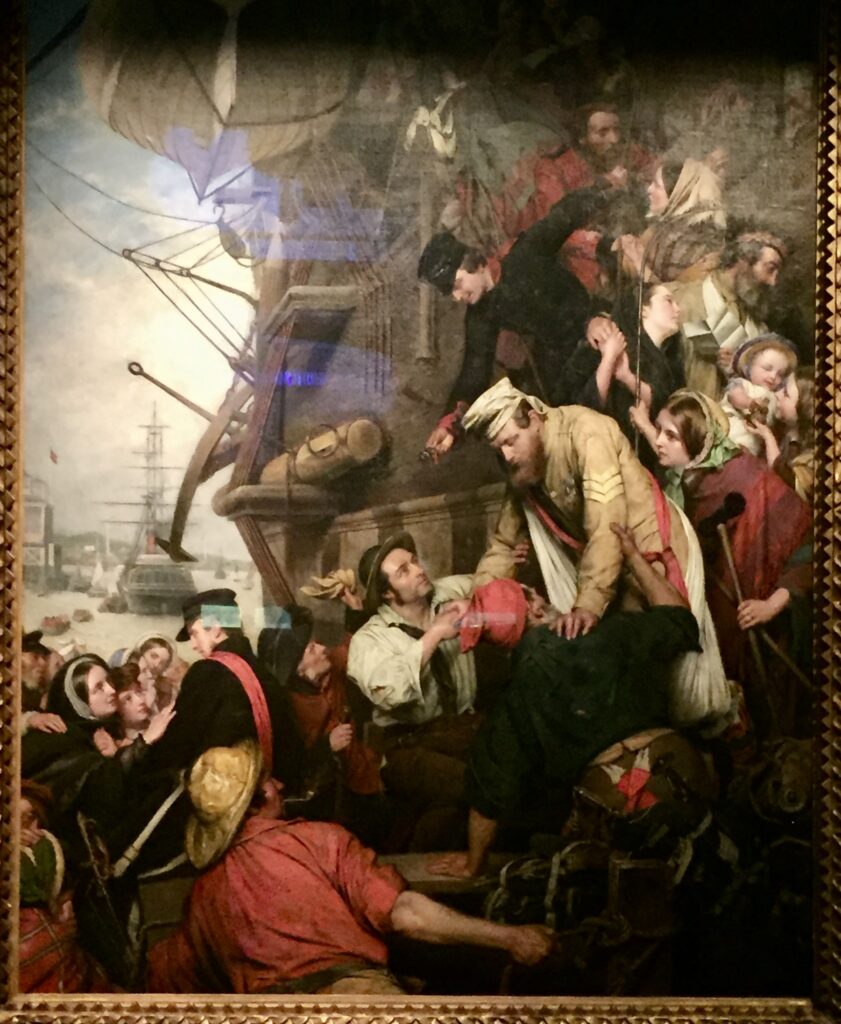
The soldiers are seen coming down the gangway of their troop ship. The main character appears to be the bearded soldier in khaki uniform with his Kilmarnock ‘pork-pie’ cap under a white cotton Havelock, which was worn to afford the wearer’s neck protection from the blazing and merciless Indian sun.
When the paintings were exhibited together in London thousands of Victorians queued to see them.
The Times had this to say about Home Again …
The crowd round the picture delight to spell out the many stories it includes – its joyous reunitings, its agonies of bereavement; the latter kept judiciously down …
And, of course, I mustn’t forget the Aurock. Its colossal skull confronts you soon after you enter …

A beast that’s been extinct for nearly 400 years, this particular skull dates from the Neolithic period (4,000 -2,200 BC) and was discovered in Ilford, East London, where herds of this creature once roamed.
If you would like to follow me on Instagram here is the link …
